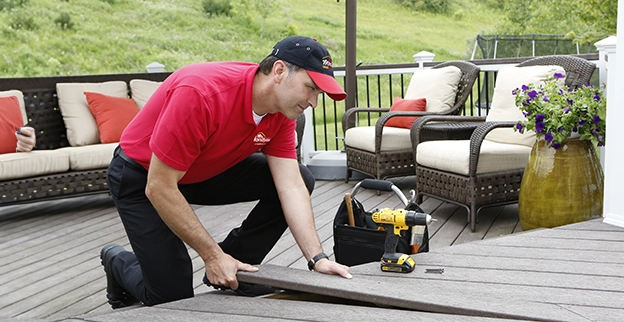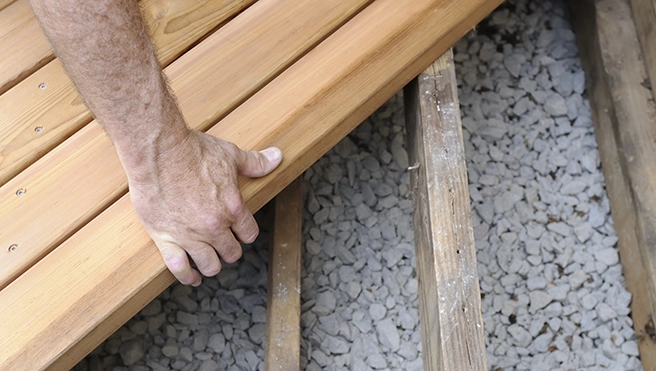Stains & Blemishes
Examine your outdoor furniture and decks for stains, imperfections, dents, and chipping. They might only appear to be a minor cosmetic issue at first, but if left unattended, they could develop into more serious issues including rot, mold, and water damage. While the majority of stains can be removed with warm water and soap or sanding, dents, and chips might eventually need to be replaced. By staying on top of repairs, you can maintain the aesthetic of your property over time.
Broken Boards
Obviously, if your deck's planks are damaged, you need repairs. The weather, rotten wood, wear and strain, and temperature variations are the main causes of decking aging. Any broken boards must be immediately replaced to prevent injuries.
Pro Tip: Boards that are split down the middle indicate they will break soon. Don't step on cracked boards, and ensure they are replaced promptly.
Loose Nails and Screws
To make sure your deck is safe to use, look for any exposed screws or nails. If you see rust or corrosion, it's preferable to replace any old fasteners with new ones because this could make a nail-less effective at holding onto the wood. Be cautious and maintain a secure environment because little children and animals are especially susceptible to unexpected hazards like unsecured boards, poles, or railings. A hammer can be used to remove rising nails, but replacing corroded parts puts safety first.
Loose Railings
Check your deck's railings for any signs of loosened connections. If you grab them and shake them, they need to be repaired right soon because if they move, the fasteners have come loose. This could be the result of a screw or nail coming free or wood rot destroying the lumber. Check any railings that might represent a safety risk once more to make sure you, your family, and your guests can enjoy your deck with confidence.
Wood Rot
Moisture may damage any sort of wood, even if it has been treated. It won't be long until wood rot starts. A specific microscopic fungus called wood rot decomposes fallen wood on forest floors. This is quite normal even though it doesn't care who it harms and will eat away at your wooden structures. If you wish to periodically check your deck for wood rot, look for these signs:
- Splintering, crumbling wood
- Discolored patches in yellow or white
- Soft areas; if you can press a screwdriver into it, you have wood rot
Water damage is often what leads to the need for a wood rot repair. Keep an eye on your deck for any standing water or other drainage issues that might necessitate a deck repair in Germantown, MD.
Pro Tip: Use a flashlight to look under hard-to-reach areas. Generally, patches that don't receive a lot of sunlight tend to be where rot spores first, so it's important to check the underside for damage.



